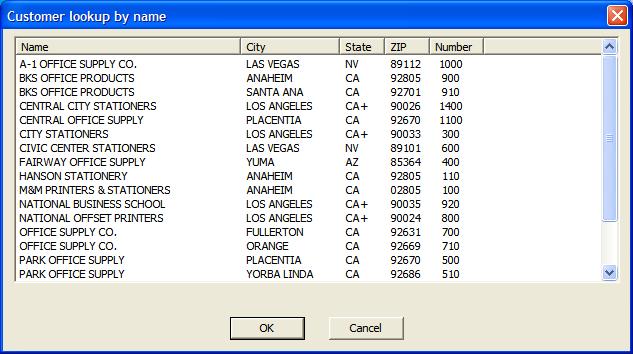Data Exploration Tools
From CometWiki
| Line 10: | Line 10: | ||
#CFILES is also used by the table lookup subprogram called CmtHelpD. This program uses a ListControl to allow the user to select the record whose primary key field will be returned to the calling program. This facility can be added to your existing application. The programmer's interface is simple and straightforward. You pass it the #CFILES name of the file and the fields you want displayed. Sample implementation is defined in CmtHelpD.inc which can be found in the XTL release. Here's an example where we're looking up the customer number by customer name: | #CFILES is also used by the table lookup subprogram called CmtHelpD. This program uses a ListControl to allow the user to select the record whose primary key field will be returned to the calling program. This facility can be added to your existing application. The programmer's interface is simple and straightforward. You pass it the #CFILES name of the file and the fields you want displayed. Sample implementation is defined in CmtHelpD.inc which can be found in the XTL release. Here's an example where we're looking up the customer number by customer name: | ||
| - | [[Image:CmtHelpD.jpg| | + | [[Image:CmtHelpD.jpg|700px|center]] |
-------------------------------------------------------------------------------- | -------------------------------------------------------------------------------- | ||
Latest revision as of 11:41, 24 May 2009
Exploring Your Data Your Comet files contain a lot of valuable data. Turning that data into useful management information requires the right software. Comet provides data exploration tools to help you retrieve the information you need. You can easily organize selected records either for immediate viewing or for exporting to some of the most popular software products for further data analysis.
Your Comet Data Dictionary is the cornerstone for the data exploration tools. It describes how the data is laid out in your files and their relationship with other files. It resides in a Comet file called #CFILES. Whether you are creating your dictionary for the first time or want to import your file definitions from #FILES or .d00 files, DbMgr is the place to start.
The Comet Reporter is a simple scripting language that lets you define custom reports. Output can easily be directed to printers, spreadsheets, web pages, or new data files. If scripting languages are not your thing, a dialog-based front-end introduced in version 8.00 will lead you through the steps to creating your reports.
- CFILES is also used by the table lookup subprogram called CmtHelpD. This program uses a ListControl to allow the user to select the record whose primary key field will be returned to the calling program. This facility can be added to your existing application. The programmer's interface is simple and straightforward. You pass it the #CFILES name of the file and the fields you want displayed. Sample implementation is defined in CmtHelpD.inc which can be found in the XTL release. Here's an example where we're looking up the customer number by customer name:
